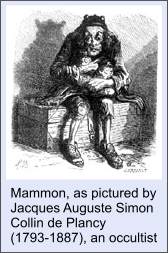
To continue our discussion of the parallels between “space” and the Holy Ghost, Preston Harold invokes Einstein, Sufism, and Jesus.
Einstein proposed that each three-dimensional portion of space “always contains a total electrical charge whose size is represented by a whole number,” despite the fact that its electrical density disappears everywhere. Thus, one might say that space “holds” the charge, but is not itself that which it holds.
All of creation is the “charge” which space holds. We all exist within space’s “confines.” Theologically we may say along with the Apostle Paul, as he quoted Epimenides at the Areopagus, “For in him we live and move and have our being.” Another viewpoint would be Paul Tillich’s concept of God as “the ground of our being.” Space certainly is the “ground” of our being. How about these words from St. Patrick’s breastplate:

…Christ within me, Christ behind me, Christ before me, Christ beside me, Christ beneath me, Christ above me.
Sounds like a perfect description of space, doesn’t it? Preston Harold continues:
Each person involves and is held in being by space. If there is a “divine Absolute,” space is the only “manifestation” of it that man knows. Sufism teaches that: “Each human soul is a particle of the diving Absolute, and the mystic aims at a complete union with the Divine. This union is attained in the knowledge that he himself is the ultimate Reality which he seeks. But the individual self is completely annihilated in this higher Self…” The difference between Jesus’ teaching and Sufism is that Jesus saw that creation, space, Holy Ghost of God, is that ultimate reality which cannot be undone, so that He insists upon the “study of and,” of the organization and arrangement of energy within it. He saw that God as Father lives in a centering of power in one’s, and in the transferring of the power inherent in “ultimate Reality” to consciousness of God in one’s being: i.e., Christ-consciousness. “I” am conscious of God as the set of the power in “my” being, and as the rest possible to life. This borders on Sufism:
I stood on the edge of things, as on a circle inscribed
But time’s revolutions have borne me into the still centre.
But Jesus saw that the individual self is not annihilated as time bears one to union with the center and seat of his being, that is, to rest or death. One’s life is harvested, his soul and “charge” renewed, and time’s revolutions bear him again to “the edge of things.” But to what end? Can one find a clue in the realm of physics?
Knowing Harold, I’ll bet we can! We’ll continue in our next post exploring more of what Einstein has to say on the matter. Until then, peace.










